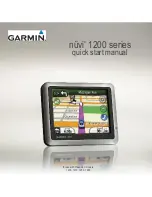
6
Q
Q
Q
Q
Q u
u
u
u
u iiiiiccccck
kk
k
k SSSSSttttta
a
a
a
ar
r
r
r
rttttt
Keypad Usage / Data Entry
(POWER
)— Press and hold to turn the unit on or off. Press momentarily to adjust screen
backlight and contrast.
(PAGE)
— Scrolls through main pages in sequence.
(QUIT)
— Returns the display to a previous page or restores a data field’s previous value.
(ENTER/MARK)
— Activates highlighted fields and confirms menu options or data entry. Press
and hold this key to mark present position as a waypoint.
(IN and OUT)
— Allows you to zoom in/out through 24 scales on the Map Page.
(ROCKER KEYPAD)
— Controls the movement of the cursor, is used to select options and
positions, and to enter data.
( D WPT)
— Allows you to retrieve Jeppesen database information and/or select a destination
waypoint. Press and hold this key to display favorite waypoints list.
(MENU)
— Displays a menu of available options for the current page. Press twice to display the
Main Menu.
(ROUTE)
— Displays a list of stored routes and allows you to create new routes.
(NRST)
— Displays nine nearest airports, navaids, airspaces, user waypoints, ARTCC & FSS
frequencies, cities, highway exits and optional MetroGuide points of interest.
CURSOR
— A highlighted area on the screen (black text on yellow) which can be moved up,
down, left and right with the keypad to select individual fields on the display (see left).
DEFAULT
— A system-selected format, built into the operating software or the unit’s memory,
that will be followed unless the user chooses a different setting.
FIELD
— The location on a page (such as a “waypoint name field”, shown at left) where a
group of characters or option is entered and displayed.
BUTTON
— Similar to “Field”. Place the on-screen cursor on a button and press
ENTER
to
select the action corresponding to that button (e.g., “GOTO”).
Example of the on-screen cursor highlighting the “GOTO”
button. Use the
ROCKER KEYPAD
to move the cursor
around the page.
Example of the on-screen cursor during data entry. Data
entry begins and ends with the
ENTER
key. Use the UP/
DOWN portion of the
ROCKER KEYPAD
to select the
desired character and RIGHT to move to the next character.
PAGE
QUIT
ENTE
R
MARK
OUT
IN
WPT
MENU
NRST
ROUTE

































